By Sean Fagan
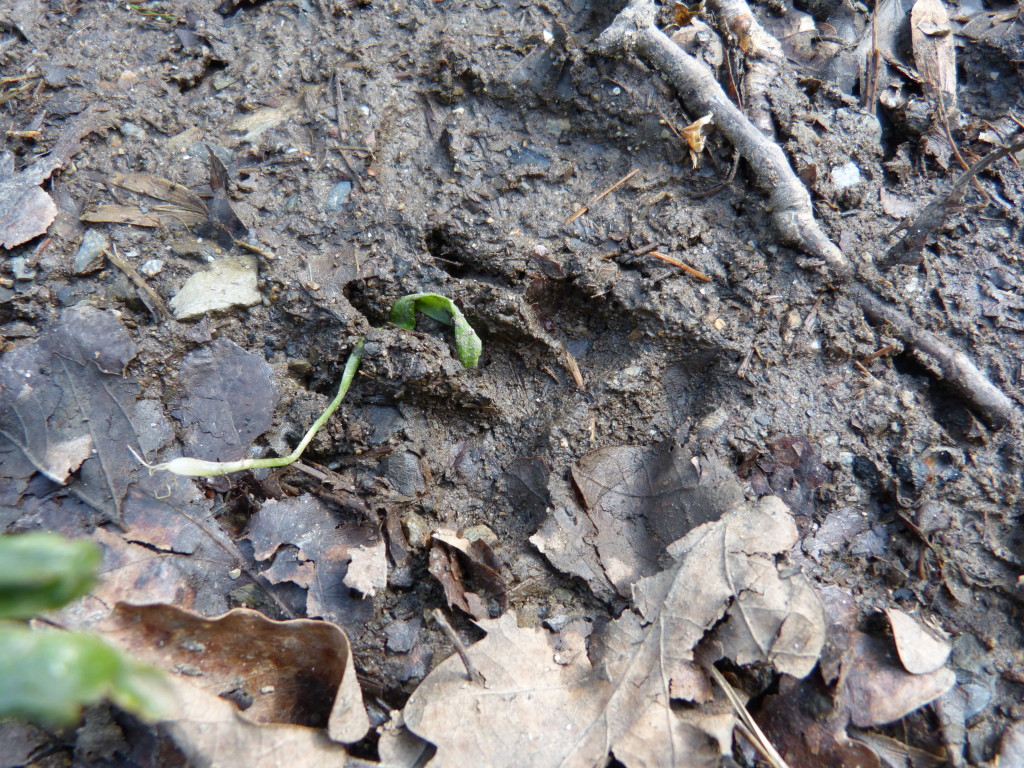
Partial front track of the European badger. Note the characteristically long claws of the front track (Photo: Sean Fagan).
Learn 6 Track Features of The European Badger
&
How to Track Badgers in Challenging Conditions
..
The European badger, Meles meles, is a relatively common, widely-distributed, burrowing omnivore of Ireland, Great Britain, most of mainland Europe and parts of the Middle East.
In this short article learn 6 key features of badger tracks and just as importantly - how to track badgers in realistic and challenging conditions - such as very damp or firm ground surfaces.
.
.
What Badgers and Bears have in Common with Bears
In a way, bears and badgers have a lot in common.
Both animals are densely-muscled and compact and often use their powerful limbs and long claws for digging.
Both have poor eyesight, but possess a sharp sense of smell and hearing.
Tracking-wise, both animals leave similar tracks except, of course, bears have much larger tracks.
Both the badger and bear have 5 toes with long, sharp claws, especially on the front feet.
Even though the badger and bear are not related, just by looking at their tracks we can surmise a certain similarity between the two species.
Their broad, flat-footed, long-clawed tracks indicate that both animals are somewhat slow-moving, opportunistic animals that are also proficient diggers (as indicated by their very long claws).
As a point of contrast, faster animals such as the red fox or wolf have smaller, more narrow, elliptical-shaped tracks that facilitates minimum ground contact and faster speeds.
That's part of the beauty of tracks - they give us clues as to how an animal interacts with its environment. In a way, tracks can give us a peek into the ecological niche an animal occupies.
.
However, the first step in tracking is positive identification. The following descriptions of badger tracks will bolster your ability to positively identify badger tracks - wherever they may occur in the wild.
The aim of this article is to enable the reader to becoming more familiar with the general characteristics of both the front and rear tracks of badgers. From there its only a matter of transferring these track details in challenging conditions.
.
The Front & Rear Tracks
of
The European Badger
.
An adult badger front track measures, on average, about 4 cm wide and 5-7 cm long (excluding claw measurements). The rear track is approximately 4 cm wide and 4 - 7 cm long.
Badger tracks consists of 4 parts - the claws, the toes, the central pad and the rear pad. The rear pad rarely shows in tracks but when it does the length of the track can be much longer (hence the length variations of the front and rear badger tracks listed above).
However, its wise to treat standard track measurements for any animal species with a pinch of salt. There are many factors that can yield a larger or smaller track than is commonly relayed in tracking text books.
Immature animals will yield smaller track measurements. Female adult tracks are often smaller than adult male tracks. When an animal moves quickly on soft substrates such as snow or mud the tracks can be larger then usual. So when looking at track measurements treat them as a general guideline.
However track measurements are important - especially when used in conjunction with other recognisable and important track features...
.
6 RECOGNISABLE FEATURES OF BADGER TRACKS
.
The overall compression shape of badger tracks can be described as 'rectangular' or 'boxy'.
A clear front track usually consists of 5 toes with 5 long claw marks. The rear track also has 5 toes and much shorter claws (which often do not show up in tracks).
A key feature of badger tracks is how the toe pads are arranged in a gently curving row. Additionally, the central pad is also slightly curved (and broad).
Often, the small, inner toe and its associated claw will not show in the track – so what you get is a four-toed track with 4 claws.
However, the presence of the unusually long claws, the overall length and width of the track, the general broadness of the track, the broad, curved central pad and the way the toes are arranged in a gentle arc are all strong indicators of badger tracks.
.
To recap, the 6 key features of badger tracks are:
-
5 toes (often only 4 toes are visible)
- The toes are aligned in a slight curve
-
A broad, slightly curved central pad
- The front claws are very long and often show in tracks
- The rear claws are much shorter than the front claws and often do not show in tracks
- The approximate length of front badger tracks is 5cm, the approx. width 4cm.
.
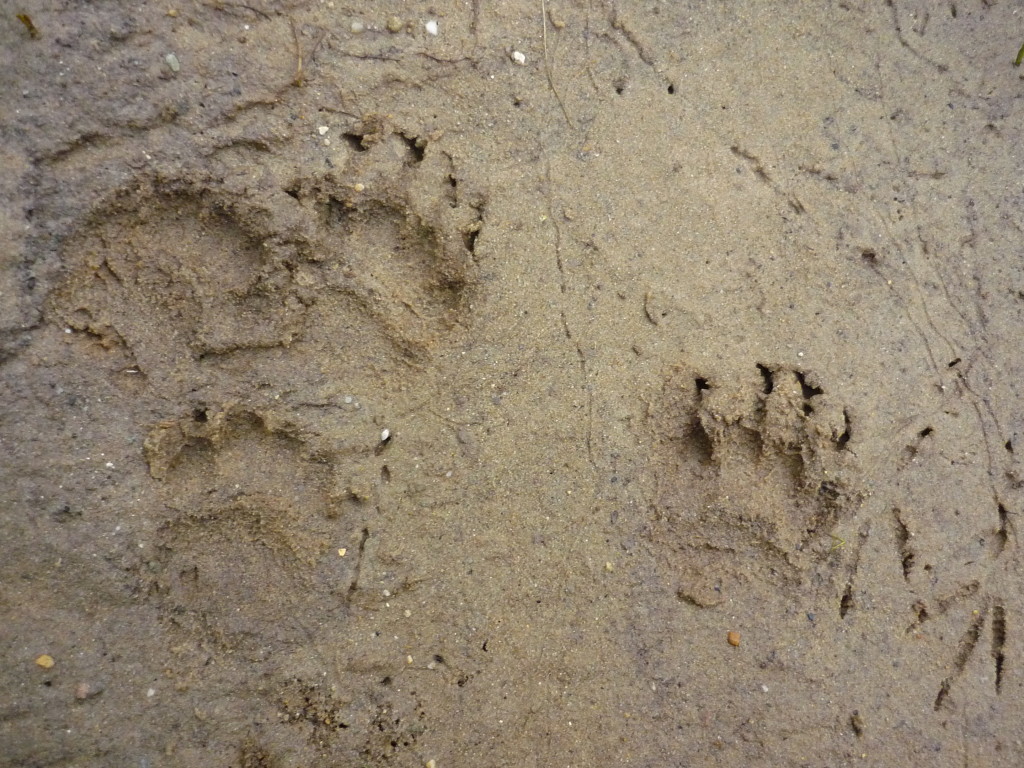
4 badger tracks: the long-clawed track to the right of photo is a front track. The other long-clawed front track is situated left of upper centre. The two rear badger tracks are to the extreme left of photo and lower left of photo. Note absence of claw marks from rear badger tracks. Note also, how the toe pads of both the rear and front tracks are arranged in a slight arc and how the heel pad is also slightly curved. The bird tracks to extreme right of photo belong to a blackbird. (Photo: Sean Fagan).
.
.
TRACKING BADGERS IN CHALLENGING CONDITIONS
The following photos highlight common, challenging conditions for tracking badgers (and all other animals for that matter).
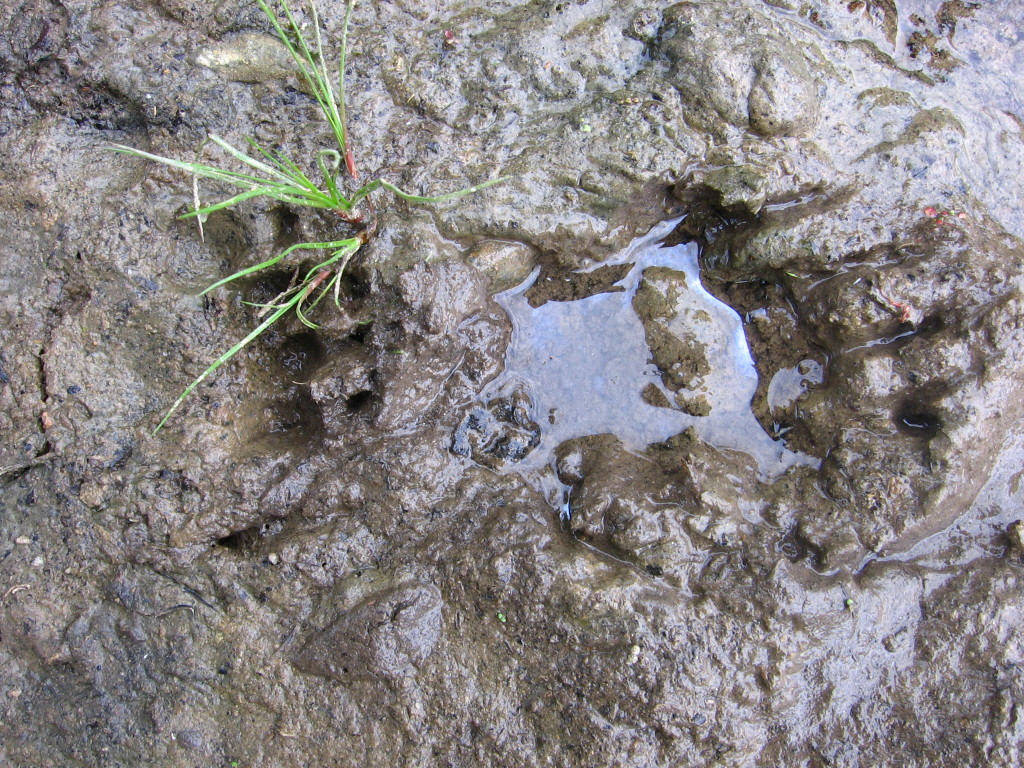
DAMP GROUND: Even though the track to right of photo is flooded, the very long indentations of the front claws indicate strongly this is the front track of a badger. Measuring the width and length of this track will confirm if its a badger track. Note also the overall 'boxy' shape to the track. The shorter-clawed rear print is to the left of photo (photo: Sean Fagan).
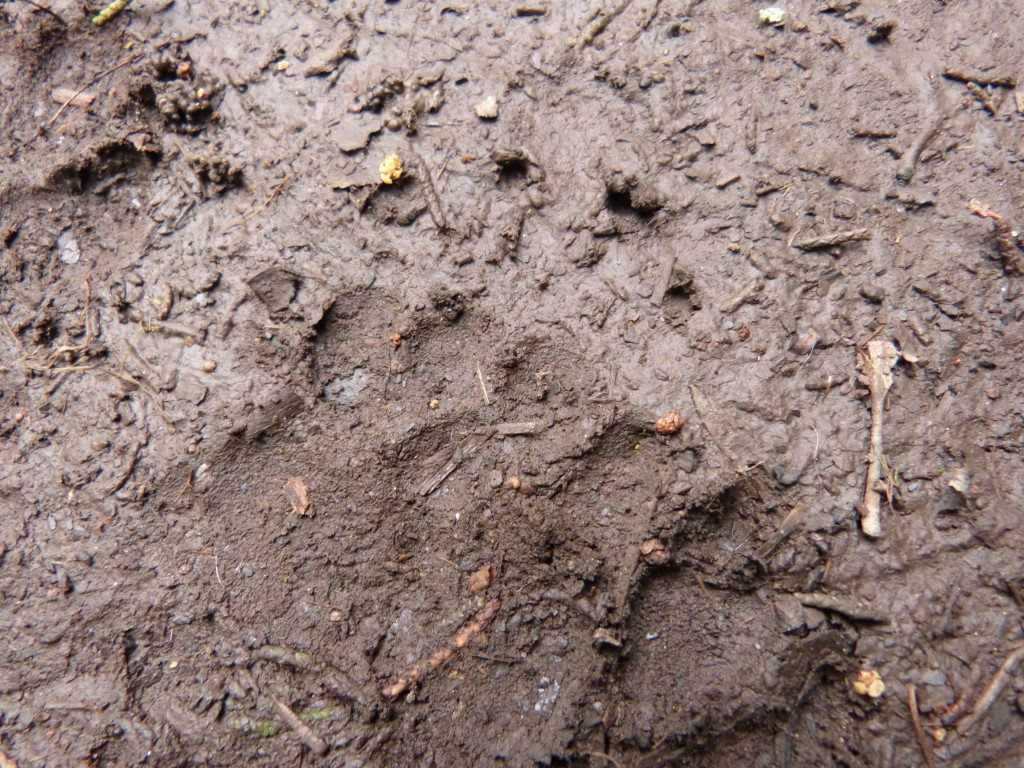
FIRM SURFACE: What tends to happen a lot on firmer surfaces with badger tracks is that the track does not sink into the substrate and the long, curving claws leave a row of claw-tip marks a considerable distance from the toe pads. Note also how the toes are arranged in a gentle curve (photo: Sean Fagan).
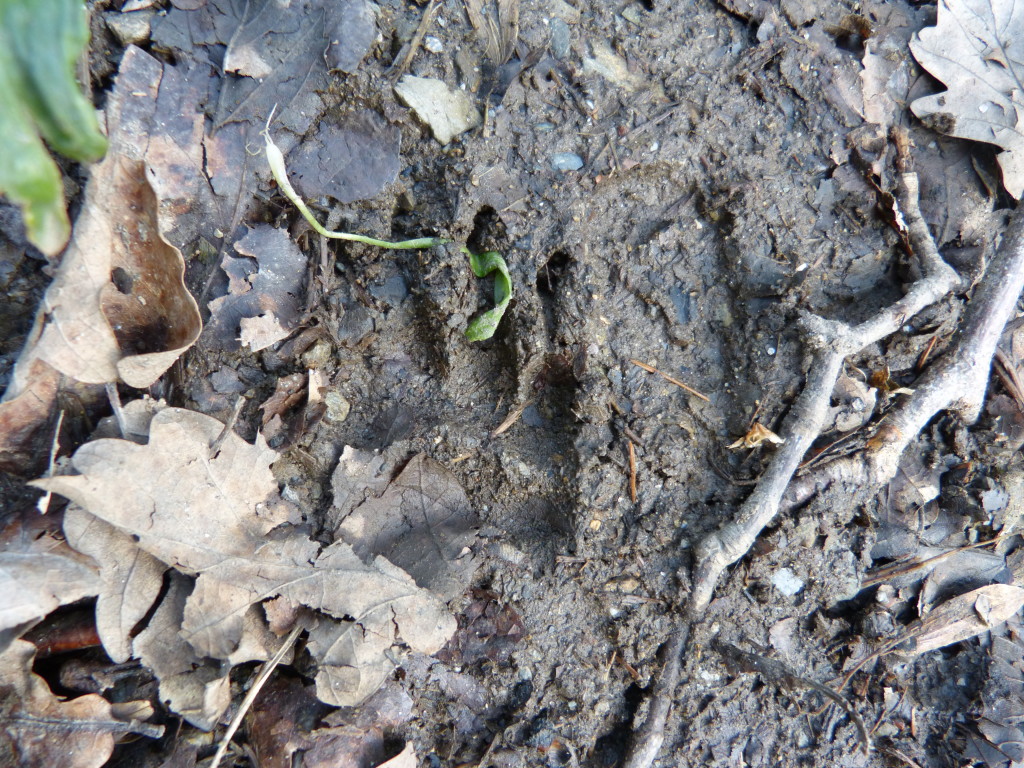
PARTIAL TRACKS: In this partially obscured track, the presence of the long claw marks and the broad, gently curving rear pad are enough clues to indicate that this is a front badger print. Also, the way the 3 visible toe pads are arranged in a gentle curve is another badger track indicator. By measuring from the rear edge of central pad to the front edge of toes will give a good indicator of the length of the track (Photo: Sean Fagan).
.
Damp surfaces, firm surfaces and partial tracks are very common tracking scenarios.
They are all part of the great challenge that is tracking.
If you like to travel to far away places to practise bushcraft then getting familiar with the tracks and sign of the European badger will transfer well in recognising the tracks of badger species aboard (as most badger species are of similar size).
Badger species such as the honey badger, Mellivora capensis, (Africa, Middle East and India) and the American badger, Taxidea taxus, (most of North America) are two notable badger species with the characteristically broad, 5-toed, long-clawed tracks that are universally recognisable track features of badgers.
There is a generic commonality of track features connected to each family of mammals that can be very useful in narrowing down the species identification of a track.
Take domestic dogs, for example, which belong to the canidae family. All wild members of the canidae family, such as wolves, coyotes and foxes have elliptical-shaped, four-toed, four-clawed tracks with a bi-lobed heel pad - just like the closely related, domestic dog.
If you are very familiar with domestic dog tracks there is a very good chance you will recognise a track from its wild cousins - like the red fox, the timber wolf or the western coyote.
I will cover this topic in more detail in the future : )
.
For now, happy tracking,
Pioneer Bushcraft.
.
.
Related articles on this website:
- The Value of Partial Tracks
- Anatomy of a Predator: the Sparrowhawk
- Nature: A Bushcraft Prespective
- Tracking Otters
.
*Check us out on Instagram, Twitter & Facebook for more outdoor-related topics..
.
.
PIONEER BUSHCRAFT DISCLAIMER
.
The aim of this article is to provide advice that will enhance the quality of your time, and well-being, when outdoors.
Pioneer Bushcraft does not take any responsibility for the misapplication of advice in this article.
The advice in this article is very much an adjunct to, and not a substitute for, high-quality bushcraft training (including outdoor medical training), relevant research and experience, trustworthy local knowledge, a thorough risk assessments and all other health & safety considerations specific and pertinent to your outdoor excursions.
Please – when outdoors, take responsibility for your well being seriously.
It can make all the difference between a good or bad outdoor experience.

Recent Comments